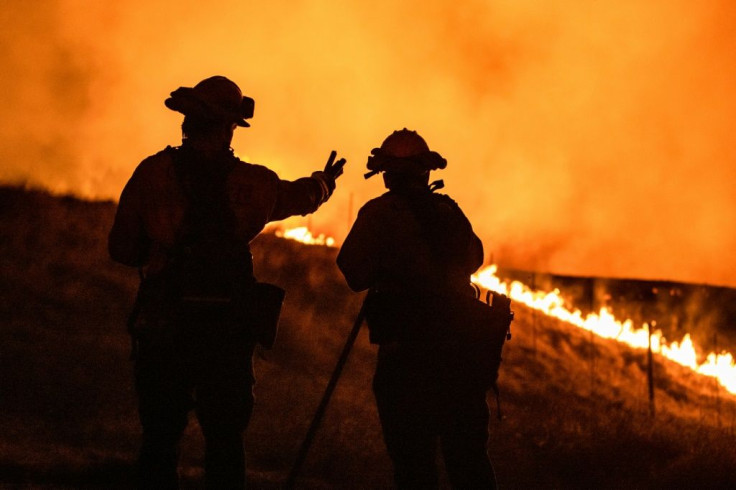Using AI To Combat Wildfires

As wildfires rage across the state, Californians face the dangerous one-two punch of the COVID-19 pandemic and dangers caused by the blaze. Thousands of residents have fled their homes, as entire neighborhoods disappeared overnight. Brave teams of firefighters have spent months battling the flames at great personal risk. Fortunately, they have a new tool to help them: artificial intelligence.
What Is AI?
Artificial intelligence (AI)) is computer software that can replace the work of a human, performing complex tasks with minimal input. Computers are designed to do math, and they can perform calculations faster and more efficiently than a human can.
AI works especially well when sorting large amounts of data and using it to simulate situations and make predictions. Often, you won’t even notice it is there: Think about the weather app on your phone or product recommendations on Amazon.
How Does AI Help Fight Fires?
Firefighting is dangerous and unpredictable work. Situations change moment to moment, and shifts in wind and other weather conditions can create new difficulties, with little to no notice. AI programs can be used to help fire departments strategize.
The fight against forest fires starts well before the fires do. At the California Department of Forestry and Fire Protection, known as CAL FIRE, the predictive services division forecasts forest fires in much the same way as your local news station predicts the weather – season by season, to chart the chances of fires breaking out.
CAL FIRE has implemented Wildfire Analyst Enterprise, an AI-powered program from local firm Technosylva Inc, to support the efforts of their human analysts. During an incident, Wildfire Analyst can generate real-time simulations to account for changing conditions, while allowing analysts to test how their strategies would play out.
Wildfire Analyst helps by “pulling together different data sources that fire managers use to make on-the-ground decisions, and it does it in real time, and can be used on a desktop computer and our commanders have it on their smartphones, so it’s very mobile and highly powerful,” said Christine McMorrow, resource management communications officer for CAL FIRE, in an interview with the Emergency Management journal.
AI also helps plan evacuations and determine how best to deploy resources. Ms. McMorrow explained, “They’re using it to plan resources, locate where fire lines can get cut within a reasonable time frame, work with the sheriffs' departments on evacuation planning and predict areas where there is the greatest potential for staging and deployment.”
Each acre saved means less land burned, better air quality and potentially fewer people forced from their homes. Thanks to massive investments in AI software, imaging and other infrastructure, California is on the path to minimizing the dangers.
How Do Wildfires Impact Health?
A record 4 million acres have burned so far this year in California. Dry forests catch fire more easily, and hotter temperatures mean forests dry out more often and earlier in the season. The unprecedented amount of burned acreage creates immense amounts of smoke and ash, and displaces lots of citizens.
Breathing smoke from wildfires causes a variety of physical problems. The CDC lists symptoms ranging from immediate breathing issues like coughing and wheezing, to more serious, ongoing problems like headaches, tiredness, chest pain and fast heartbeat. Wildfire smoke, like any inhaled smoke, can kill.
Now-scarce N95 masks (especially the valved/vented kind, which is of limited use against COVID-19) can help protect against smoke, but they are in short supply amid the pandemic. Coughing, sneezing and other reactions to poor air quality can also spread COVID-19, as the body emits more respiratory droplets.
People displaced by wildfires often end up living in hotels, RVs, campsites, shelters and crowded family homes -- places where social distancing is more difficult. That makes them more susceptible to COVID-19. Firefighters on the front lines spend time in fire camps, where social distancing and hygiene are real concerns. The trauma of loss and displacement can also trigger emotional complications, such as sadness, guilt and numbness, that may require counseling.
The Take Home
Wildfires cause a colossal amount of both property damage and health issues. Record-breaking fires in California this year have made containment a difficult task, and COVID-19 has made it more dangerous, as firefighters contend with dwindling supplies, new health concerns and different patterns of activity. New tools such as AI suites are helping firefighters predict how fires spread and better contend with the challenges they face.
Sean Marsala is a health writer based in Philadelphia, Pa. Passionate about technology, he can usually be found reading, browsing the internet and exploring virtual worlds.



























